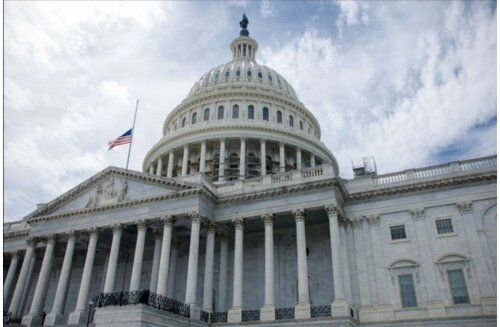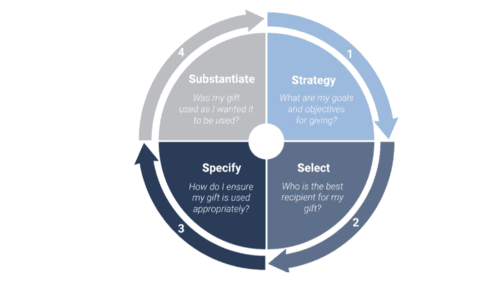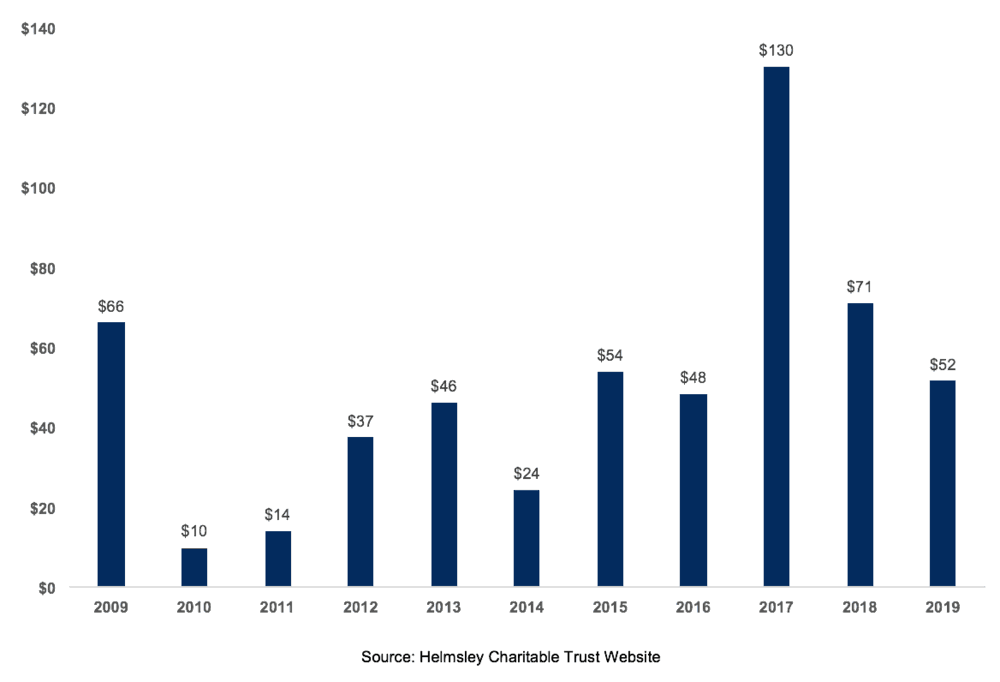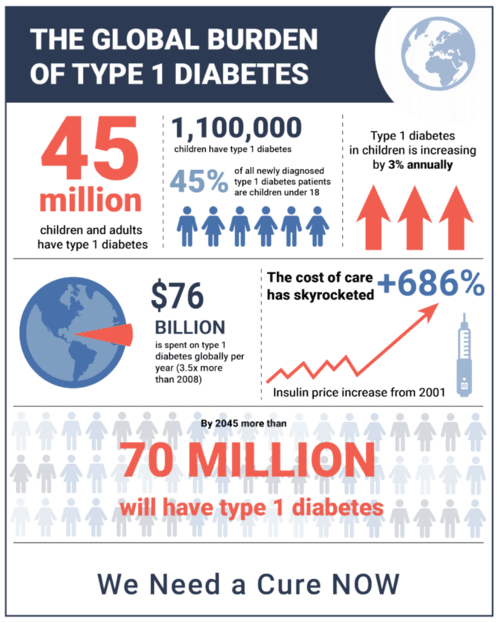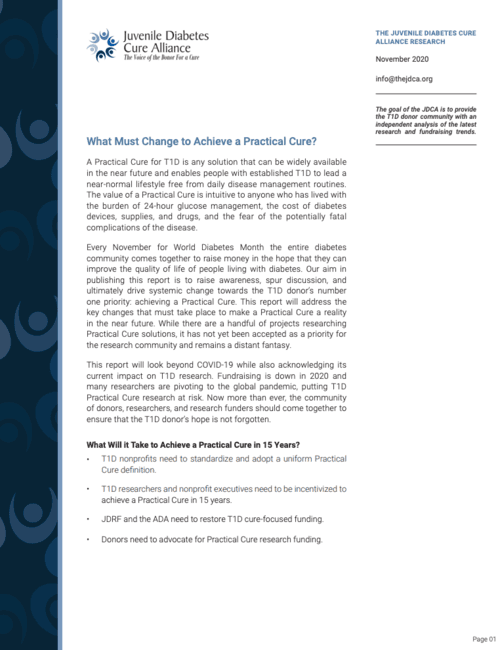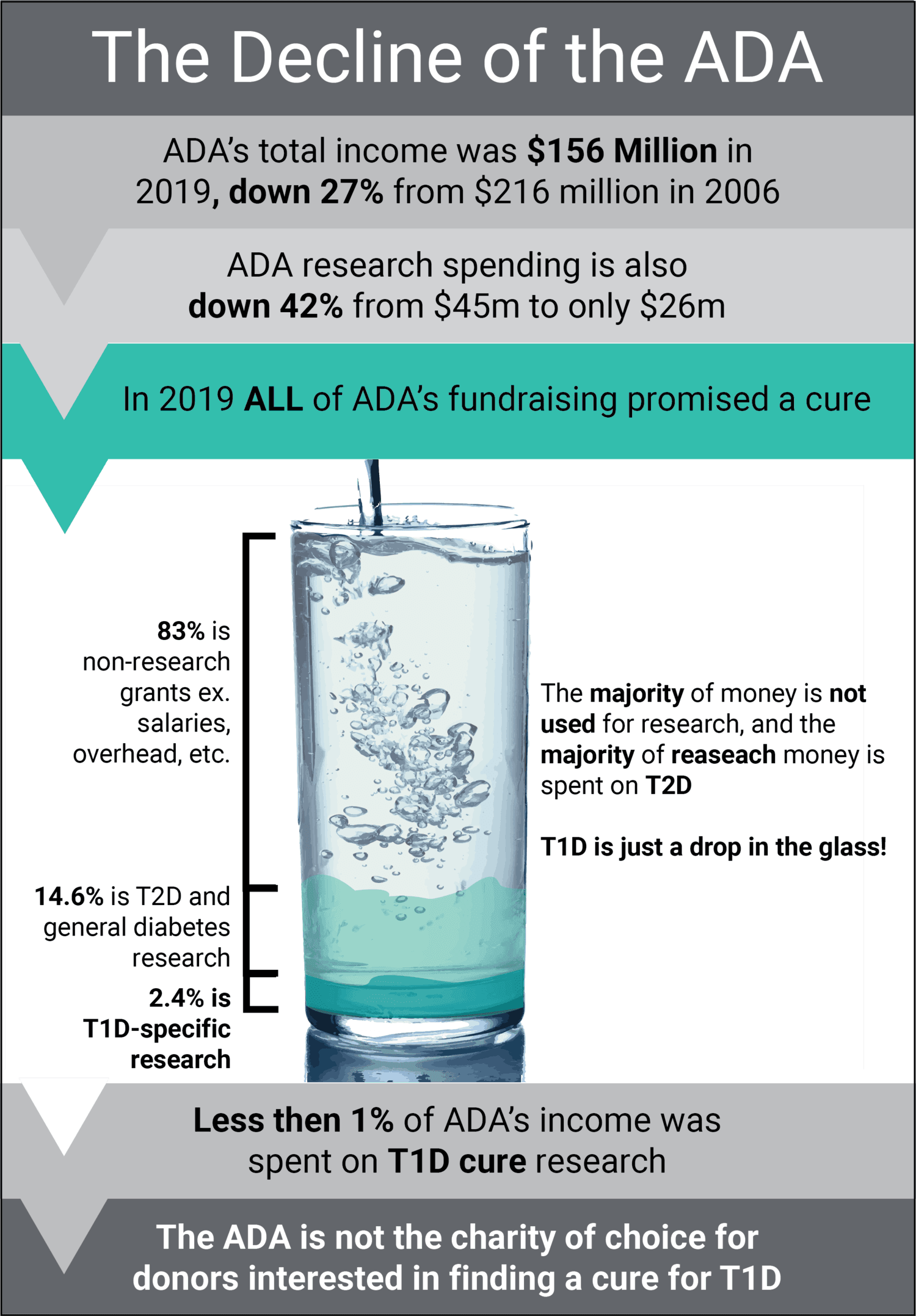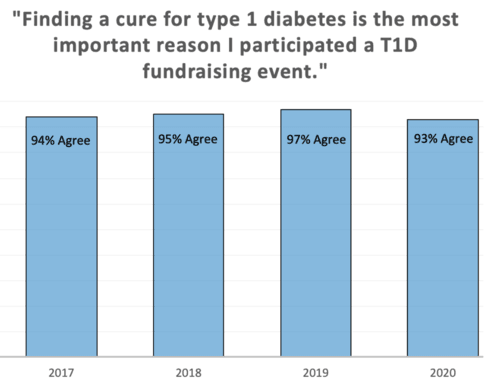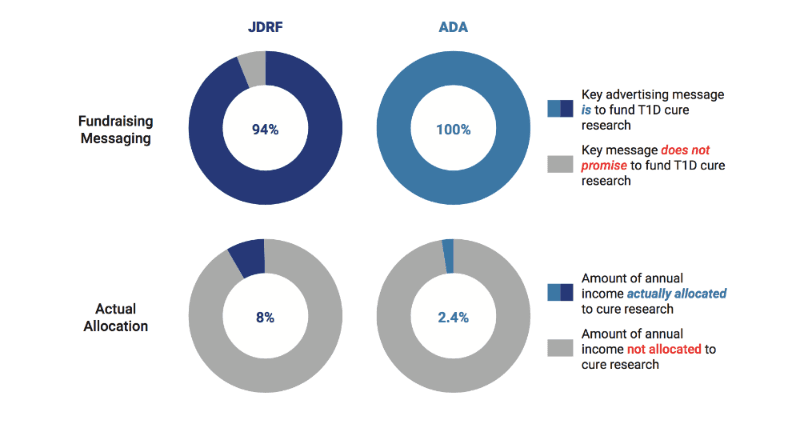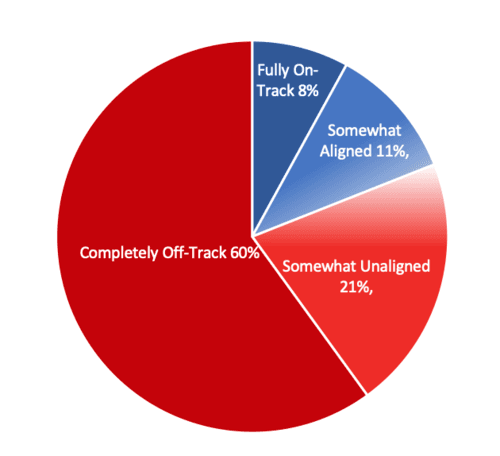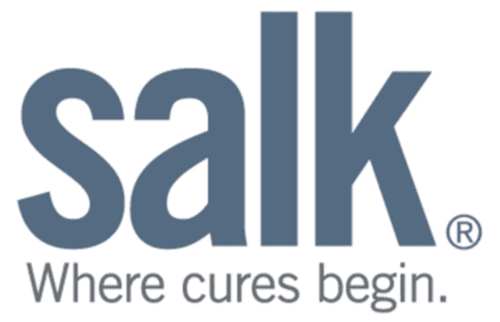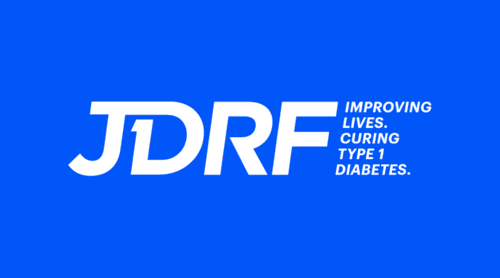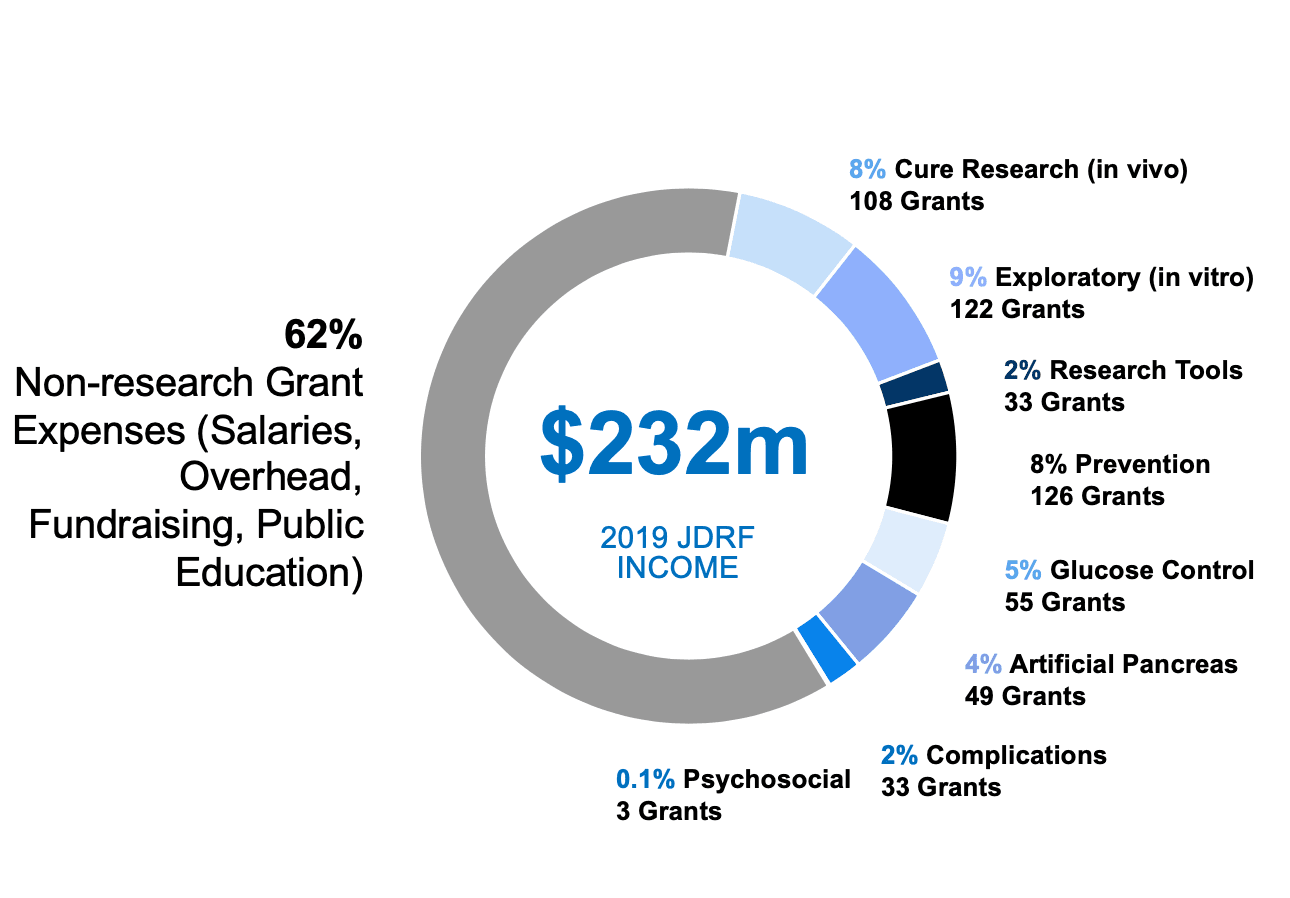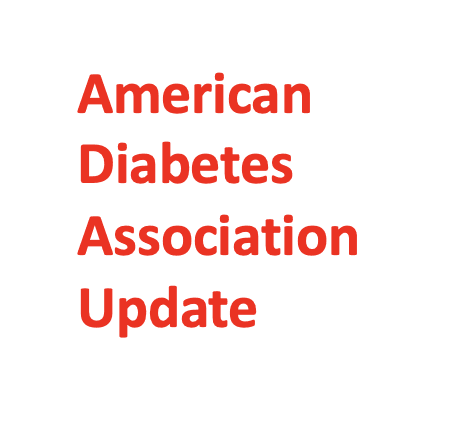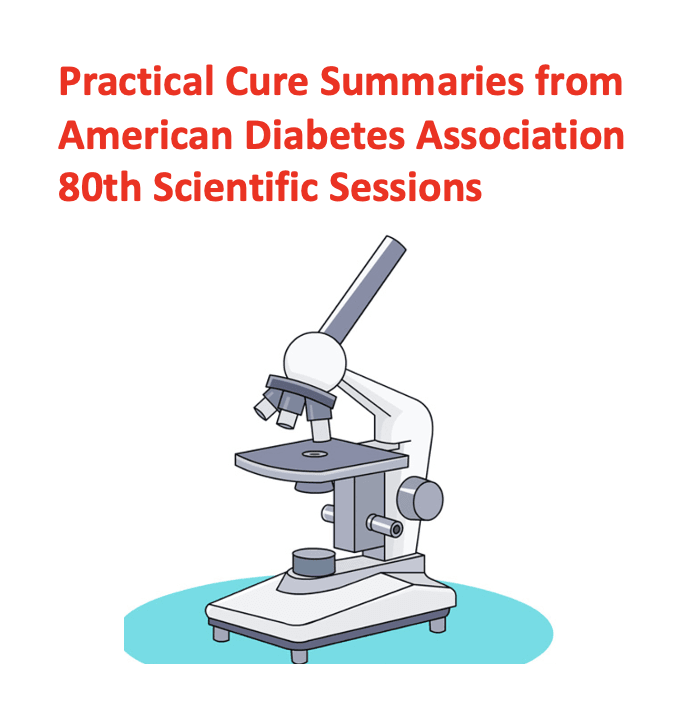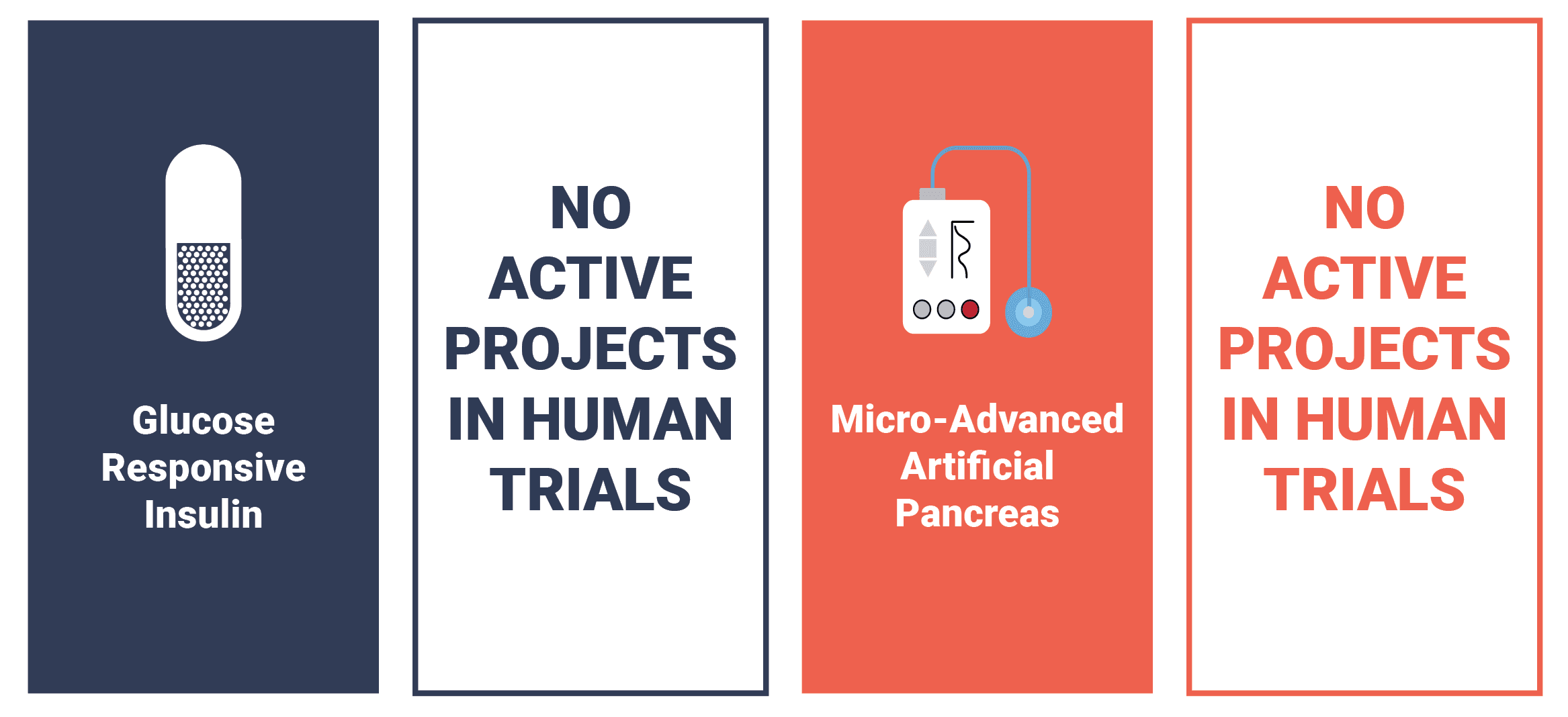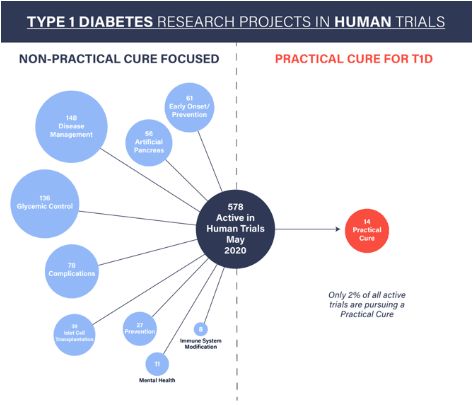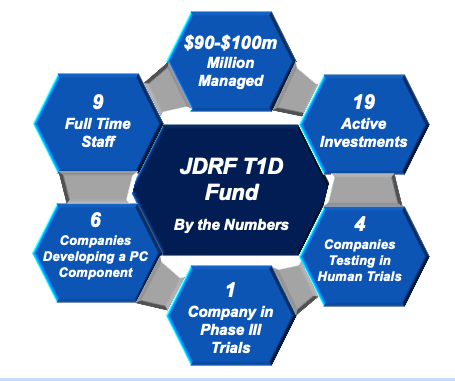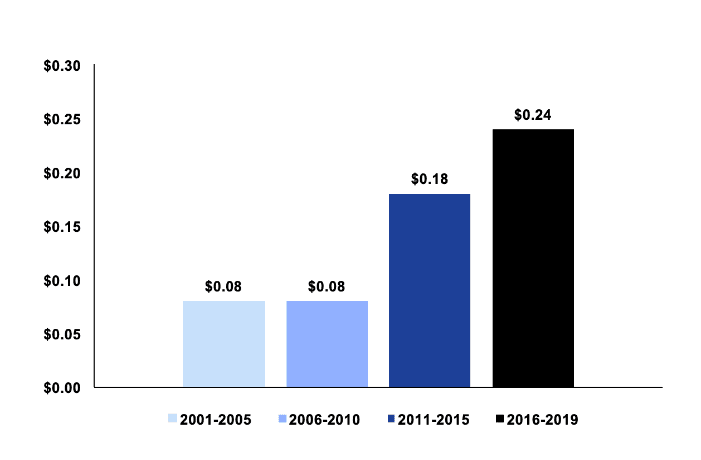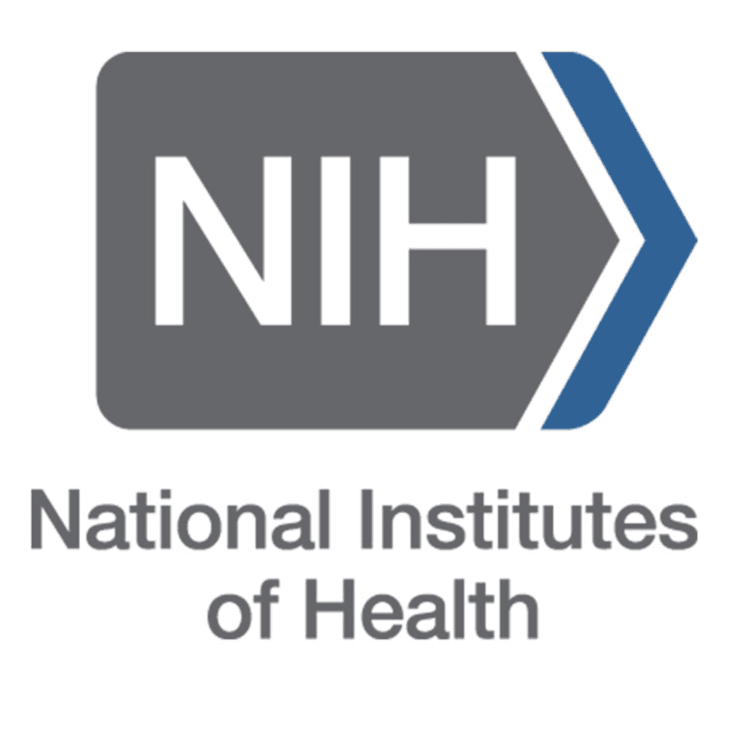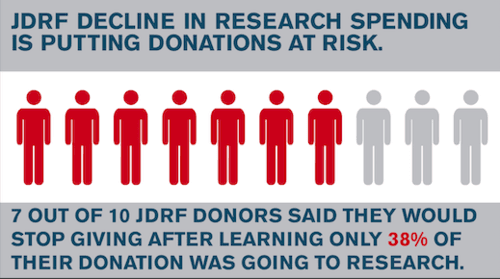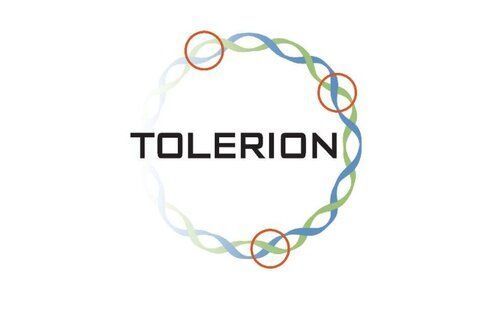This week’s package of COVID-19 relief bills brought some much-needed stability to the T1D research community. The No Surprises Act will extend funding for the Special Statutory Funding Program for Type 1 Diabetes, or Special Diabetes Program (SDP), through 2024.
This report lays out a thoughtful process for giving that acknowledges your right to make an informed choice with your donation and ask for results. The 4S’s of Good Giving strategy helps to increase the impact of any charitable gift and ensure your T1D donation is being used to fund cure research.
This report will provide an overview of the Leona M. and Harry B. Helmsley Charitable Trust. The Helmsley Trust has routinely chosen to prioritize T1D since 2009. In this time, the Trust has allocated an average of $50 million per year to T1D grants.
In more than 160 countries around the world, the T1D community is coming together for World Diabetes Day. We’ve chosen today to announce that the 6th Annual More for a T1D Cure Petition has officially surpassed the goal of 300,000 signatures! This incredible show of support underlines the T1D community’s unwavering determination to achieve a Practical Cure.
This week, JDRF CEO Aaron Kowalski sent out a fundraising email to supporters in observance of National Diabetes Awareness Month. This report will provide a few key takeaways for donors who are considering how to maximize their impact during National Diabetes Awareness Month.
In celebration of the beginning of National Diabetes Awareness Month, this report will address the most crucial question for people living with type 1 diabetes today: what will it take to achieve a T1D Practical Cure in the next 15 years?
This infographic provides a snapshot of the ADA's research spending. The key takeaway is that the majority of the ADA's research spending is allocated to type 2 diabetes, and only a small portion is attributed to T1D research. In 2019, only 2.4% of the ADA's annual budget was used specifically for T1D research.
The purpose of the survey is to understand what motivates T1D donors to give their time and money to JDRF & ADA events. This year’s survey included trend questions from prior years as well as new questions meant to gauge reactions as the organizations transitioned to virtual fundraising platforms.
Like prior years, almost all of the ADA and JDRF fundraising event advertising promised to use proceeds to fund cure research. However, only 8% of JDRF income and 2.4% of ADA income was actually used to fund cure research in 2019.
For the first time in its 50-year history, JDRF has a plan to seek support from people with “T2D and other autoimmune disorders.” This report gauges the reaction of the T1D community.
This is the 9th annual review of T1D non-profit executive compensation. The executives at T1D nonprofits are in the top 1 percent of all earners in the United States, but these salaries are in no way tied to performance towards a T1D cure.
This report will examine the structure of the ADA and JDRF Boards and offer recommendations for how to maximize efficiency in a time of turmoil.
Last week, researchers from the Salk Institute in San Diego published an article in the journal Nature which showed they had successfully cured T1D in mice by implanting immune-evasive stem cells.
Last week JDRF announced a major restructuring of the organization. Like many non-profits, JDRF has struggled during the COVID-19 pandemic and, since March, has experienced a 40% decrease in fundraising compared to the prior year.
This is the third in a series of JDCA reports focused on ADA financials. This report examines ADA expenses.
Over the past five years, the JDRF research funding strategy appears to have become much less focused; less money is being spent on more projects. This remains a major concern for T1D donors who, above all else, believe JDRF's top research funding priority should be cure research.
The ADA has experienced a historic and sustained decline in revenue from 2006, the first year ADA financial documents are widely available. This report examines the main drivers of the loss in revenue and offers suppositions as to how such a decline could have occurred.
This is a roundup of the T1D news that broke at the American Diabetes Association's 80th Scientific Sessions, the largest US-based diabetes research conference of the year.
This is the eighth year the JDCA has reviewed the ADA’s financial documents. In that time, little has changed. The ADA spends only a small portion of its annual budget to fund research grants and an even smaller amount on research that is specifically focused on T1D.
This report reviews the 14 active Practical Cure (PC) research projects underway in FDA approved human clinical trials.
A Practical Cure is any solution which minimizes the disruptive aspects of T1D, delivers a near-normal quality of life and has a chance to be available within the next 15 years. It is aligned with the wishes and desires of people who are currently living with type 1 diabetes.
This is the eighth annual overview of all human trials registered in the U.S. FDA database, clinicaltrials.gov. Out of 579 active T1D trials, just 14 are focused on curing people currently living with the disease.
The JDRF T1D Fund was launched as a subsidiary of JDRF in December 2016. This report examines the Fund's impact on T1D research over the past three years.
This report examines JDRF internal costs for administering research grants. The main takeaway is that JDRF administration cost for each dollar of actual research grants have increased 216% since 2008 while research grant spending is down 43%.
This report is part of series that reviews elements of JDRF’s annual budget. This one looks at trends in JDRF payroll – salaries, benefits, and bonuses. Over the course of the past 10 years no single expense category has increased, in total dollars, as much as payroll.
In Fiscal Year (FY) 2019, the National Institutes of Health (NIH) directed $174 million of federal taxpayer money to type 1 diabetes research, making it the largest not-for-profit funder of T1D research grants in the United States.
“Why is there not yet a cure for T1D”? This was the first question posed to Dr. Aaron Kowalski, President & CEO of JDRF, during his Facebook Live chat last Friday, April 3, 2020.
The JDCA conducted its eighth annual survey of T1D financial donor goals and priorities in March 2020. Respondents represented the broad array of voices within the T1D donor community.
This report provides updates on Stem Cell Educator Therapy, which received FDA approval to enter it’s first US-based efficacy trial for T1D in November 2019.
This report focuses JDRF's revenue and expenses in 2019. Based on publicly available tax and financial documents, it shows how JDRF generates its revenue and how it utilizes those funds.
This report provides an overview of JDRF's 2019 financial statements, released on February 14.
This report focuses on Tolerion’s immunomodulation therapy for people with established T1D, identified as a Practical Cure in the 2019 State of the Cure for T1D.
This report will provide a research update on the three T1D projects in ViaCyte's pipeline as the San-Diego based company continues their mission to 'functionally cure' T1D via progenitor stem cells.
This is the eighth annual addition of this report. It summarizes progress made during 2019 toward a Practical Cure for type 1 diabetes.

